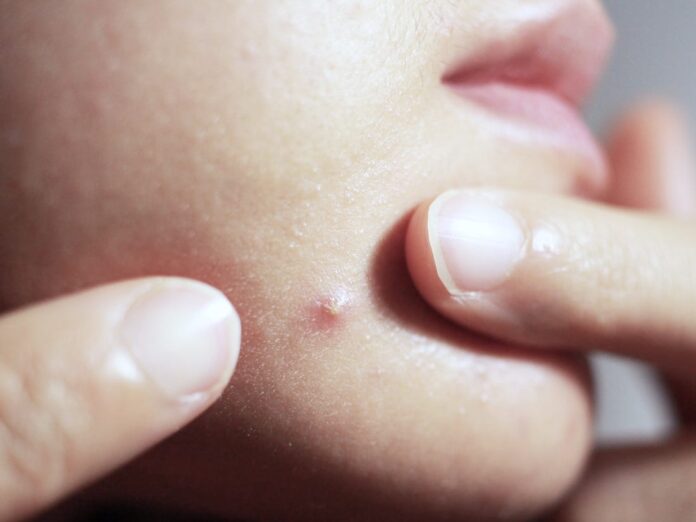
By Kayla McDonnel
Acne is a common skin disease that affects an estimated 85% of people at some point in their lives.
Symptoms include pesky pimples that can be frustrating and difficult to get rid of.
While conventional treatments can get rid of pimples, they’re often associated with adverse effects, such as skin irritation and dryness.
As such, a lot of people have turned to natural alternatives to get rid of pimples fast. However, while there are a lot of natural acne remedies out there, only a handful are scientifically proven to help.
Here are 4 natural ways to get rid of pimples fast, although they may have limited research supporting their effectiveness for this purpose.
Read more: 8 Tips To Get Rid Of Garlic And Onion Breath
1. Spot treat with tea tree oil
Tea tree oil is extracted from the leaves of the tree Melaleuca alternifolia, which is native to Australia.
It’s well known for its ability to fight bacteria and reduce skin inflammation. Specifically, tea tree oil helps fight P. acnes and S. epidermidis, two types of bacteria that can cause pimples.
One study found that 5% tea tree oil gel was almost four times more effective at reducing acne lesions and almost six times more effective at reducing acne severity than a placebo.
In another study, a gel containing 5% tea tree oil was proven equally effective at reducing pimples as a lotion containing 5% benzoyl peroxide, a common acne medication.
The tea tree oil treatment also resulted in fewer adverse effects, including dryness, irritation, and burning.
It’s important to note that tea tree oil is very potent and can cause redness and irritation when applied directly to the skin. For this reason, it should be diluted with a carrier oil.
According to the National Center for Complementary and Integrative Health, only a small amount of research has been conducted on the topical use of tea tree oil for health conditions, and a limited amount of research indicates that tea tree oil might be helpful for acne (6).
If you choose to try please it, use it safely and always perform a test patch on your skin, as tea tree oil can be very irritating and should never be applied undiluted to the skin.
2. Spot treat with other essential oils
In addition to tea tree oil, many other essential oils with antibacterial and anti-inflammatory properties can help clear up pimples quickly.
A large scientific review found that essential oils of cinnamon, rose, lavender, and clove fight the acne-causing bacteria S. epidermidis and P. acnes.
Rosemary and lemongrass were also shown to inhibit P. acnes.
One study compared the acne-fighting abilities of clove-basil oil, 10% benzoyl peroxide, and a placebo. Both the 2% and 5% clove-basil oils were found to be more effective and faster at reducing pimples than benzoyl peroxide.
Another study found that a gel containing acetic acid, orange, and sweet basil essential oils resulted in a 75% increase in the healing rate of pimples.
Like tea tree oil, these essential oils are very concentrated and can cause irritation if applied directly to the skin. Be sure to dilute all essential oils with a carrier oil, perform a test patch before regular use, and discontinue use should irritation develop.
A wide variety of essential oils are available online, including clove oil.
3. Apply green tea to the skin
A lot of people drink green tea for its health benefits, but it can also be helpful when applied directly to the skin.
Green tea contains flavonoids and tannins, which are known to help fight inflammation and the bacteria that may cause pimples.
It’s also high in the antioxidant epigallocatechin-3-gallate (EGCG), which has been shown to fight inflammation, reduce sebum production, and inhibit the growth of P. acnes in people with acne-prone skin.
Multiple studies have shown that people with acne experience significantly less sebum production and pimples when they apply a 2–3% green tea extract to their skin.
There are a handful of skin care products on the market that contain green tea, but it’s very simple and cost-effective to make your own mixture at home.
4. Moisturize with aloe vera
Read more: Study: Green Tea Linked With Type 2 Diabetes
Aloe vera is a tropical plant with leaves that produce a clear gel.
When applied to the skin, aloe vera gel has been shown to help fight bacteria, reduce inflammation, and promote wound healing.
Because of this, it’s a popular treatment for a variety of skin conditions, including psoriasis, rashes, cuts, and burns.
There are limited studies on the ability of aloe vera to fight pimples specifically, but existing research is promising.
Aloe vera contains lupeol, salicylic acid, urea nitrogen, cinnamonic acid, phenols, and sulfur, all of which inhibit bacteria that might cause pimples.
In one study, varying concentrations of aloe vera gel were added to a clove-basil oil and evaluated for anti-acne properties. The higher the concentration of aloe vera in the lotion, the more effective it was at reducing pimples.
Another study found that using 50% aloe vera gel with tretinoin cream was significantly more effective at clearing up pimples than tretinoin cream alone. Tretinoin cream is an acne medication derived from vitamin A.
Although aloe vera gel on its own was not effective at treating pimples, it enhanced the anti-acne effects of clove-basil oil and tretinoin cream.
While aloe vera gel may help clear up pimples on its own, it may be more effective when combined with other remedies or medications.
Culled from Healthline















